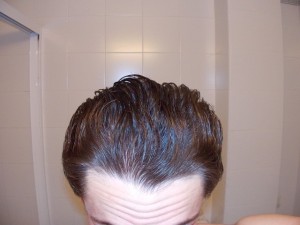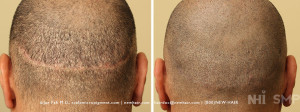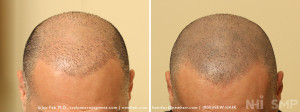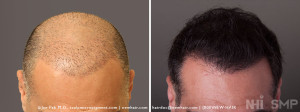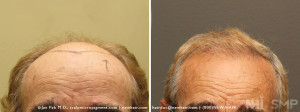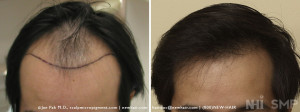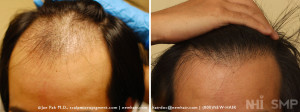I’ve checked out Dr x’s website, and he claims that he can perform an FUE surgery with a transection rate of under 3 percent. I’ve read your article on FUE which was written near the end of 2007. In that article you mentions that “the transection rate by our NHI surgeons are still well within the 10% range for FUE and we make no pretenses that it is better than that routinely.” With Dr x’s experience and latest tools, has he overcome a major flaw within the FUE procedure?
Also Dr x is marketing a new device which he created to improve the FUE procedure.
Some doctors have big egos. Some claim to have a better mousetrap. I can not and will not comment on another doctor’s claims. There are now robots doing FUE with good success and low transection rates that are evaluated by independent third parties and trusted researchers. There are no independent judges or observer who can verify claims. You are stuck to doing your own research and then trusting that the doctor you selected was honest with you.
The transection rate with FUE depends upon the skills and experience of the doctor, the instruments used and in many cases, the tissue make-up of the patient’s collagen. where the doctor (or robot) has no control. In the later case, it is individual PATIENT dependent.
I would guess that normal transection rates still vary in the hands of good, experienced and honest surgeons, number less than 10 percent transection rates. The transection rate is not the critical element in an FUE procedure, rather it is the experience of the team in managing the grafts. Even with the Artas® robot, other than the coring of the grafts, the rest of the process is manual, so manual quality control processes determines the success or failure of graft growth. I have recently seen a patient who had FUE with the Artas® robot, and the procedure largely failed. Even if the transection rate was very low, the detail in the manual management of the grafts may have been an issue. Did you know, for example, that if a graft is left open to the hair for as little as 10 seconds, it will die. That death, will not be seen until 8 months after the transplant surgery is finished.
I’ve seen Dr. Pak’s FUE surgery and his transection rate is not infrequently less than 3%, however, on the rare patient who has ’tissue’ differences in their collagen, the transection rate may go up to as high as 10%. We could ignore this singular result and report transection rate of under 3%, but that would not be honest. Our efficiency with FUE using our own internally developed tool is higher than most doctors in the world. It is not unusual for us to extract FUE grafts at the rate of 1,000-1,500 grafts/hour. We run an ‘open shop’ (open door policy) here which means that we hold open house events every month where our patients, happy or unhappy, can come to meet with people like you. Few doctors are that open with their patient population.
I realize for marketing purposes and advertising to the public these numbers and stats would seem important, but I would rather that your ask to meet some of his patients and get the doctor’s results from the patient’s own mouth as well as see the results with your own eyes.
Tags: fue, transection rate, follicular unit extraction, new tool, artas®


